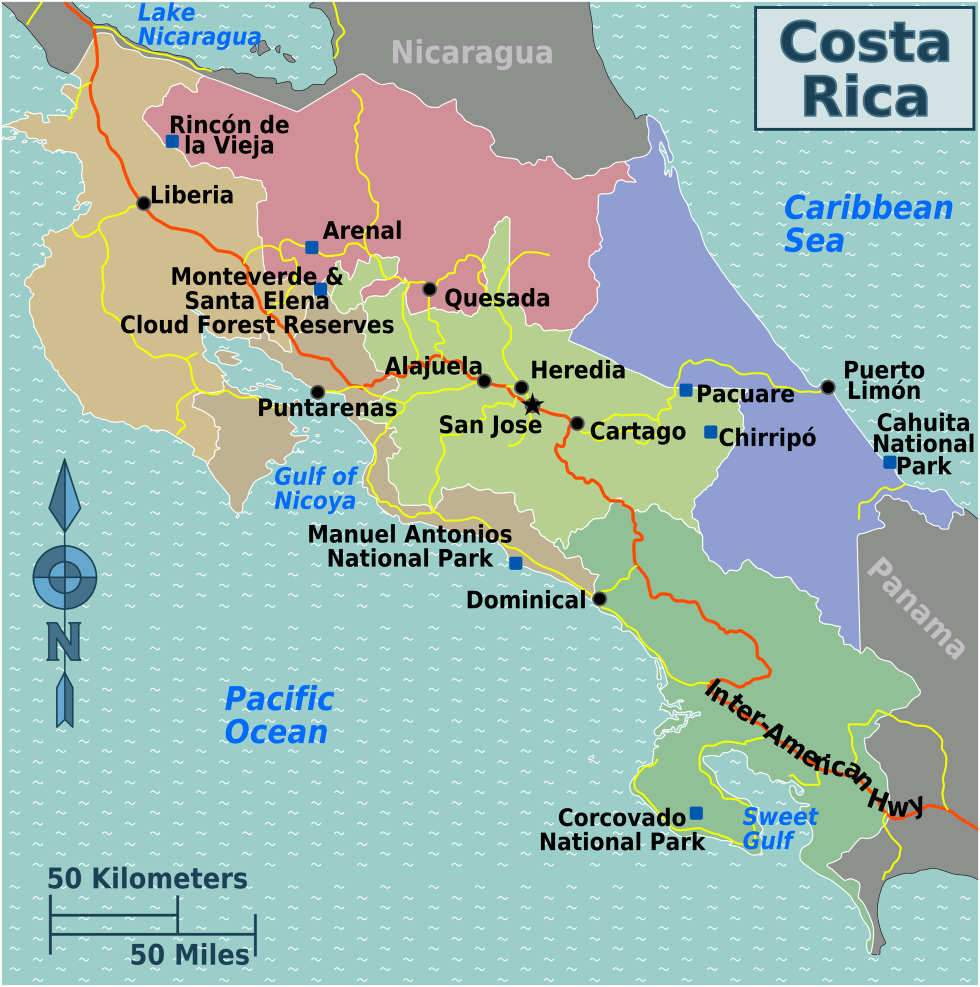In January, I had the opportunity of a lifetime to go on a study abroad research trip to Costa Rica. Costa Rica in Spanish is literally "rich coast," and that name is so fitting. The vast amount of diversity and culture I was able to experience while abroad was simply flabbergasting. It was truly an amazing and rewarding experience.
Costa Rica is a country in Central America, nestled between Panama and Nicaragua. Its capital and largest city is San Jose, with a population of a whopping 333,000. Costa Rica is known for being both the happiest and greenest country on Earth.
My trip was associated with a Biology course that included field research as a component. Over the course of our trip, we stayed at four places: The Goldring-Gund Marine Biology Station in Playa Grande, Cloudbridge Nature Reserve in San Gerardo, Poor Man's Paradise on the Osa Peninsula, and Heredia, right outside of San Jose.
Journey to Costa Rica
On a frigid January morning, my family and I began the 2 1/2 hour drive to Louisville's airport. Though this would be one of the shorter flights I've been on, I was still filled with apprehension. After a quick flight to Atlanta, my classmates and I soon were off on our journey to Liberia. The highlight of the flight was an extremely drunk man whose repetition of the phrase, "We're going Costa, we're going Rica," only served to increase my excitement for the new place I was about to explore.
Upon landing, I was struck by how rural and undeveloped the airport and surrounding area were. Our first destination, Playa Grande, was nearly an hour away by bus, and that ride gave me my first glimpse into the lives of rural Costa Ricans. Each town we passed through began very spread out and gradually centralized as we reached the town center. These communities were very obviously centered on education and religion, as almost every town had each in the middle.
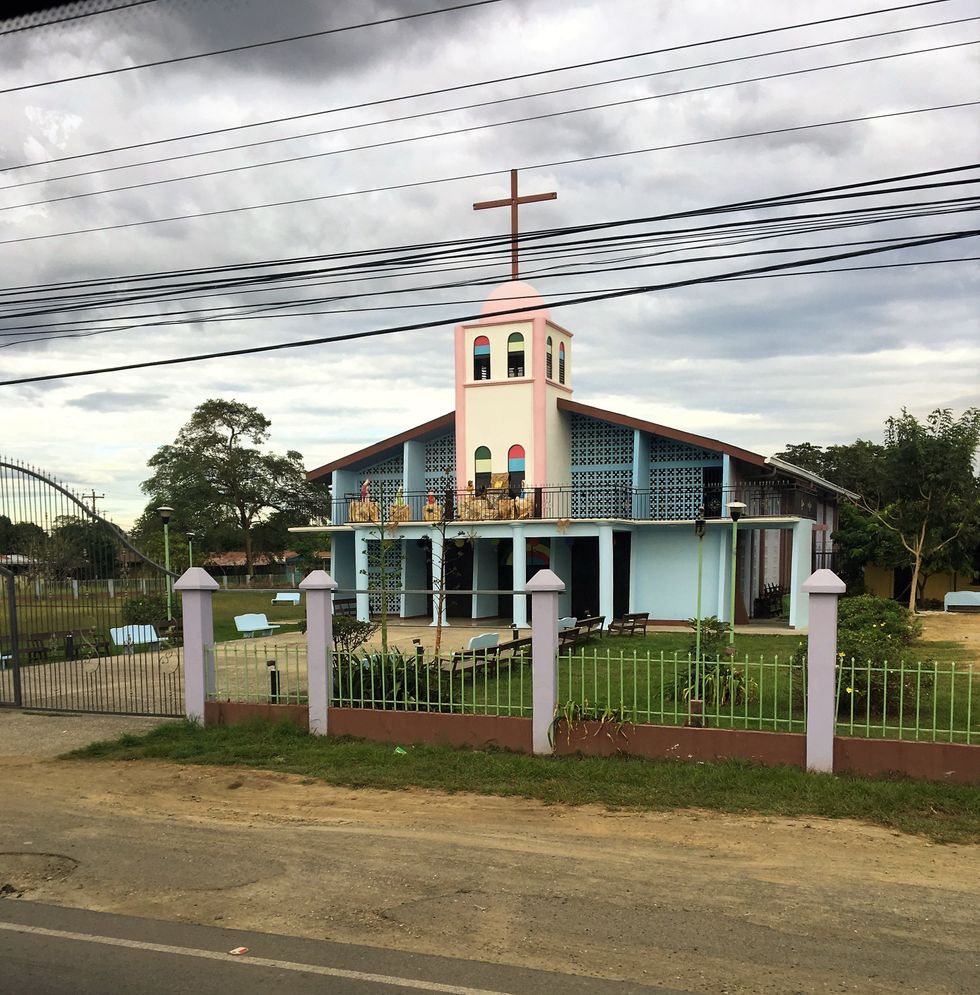
Goldring-Gund Marine Biology Station
Goldring-Gund is a small block building nestled right on the beachfront of Playa Grande in Parque Nacional Marino Las Baulas. The station itself is dedicated to the research and conservation of sea turtles. Because of drastically declining numbers, sea turtles are a precious commodity that needs protection. We didn't arrive until late that afternoon, but as soon as we arrived, we were assigned teams to patrol with later that night. I was assigned a beach patrol team. Our goal was to search for nesting sea turtles and fresh nests across local beaches to collect data or move the nest if it is uninhabitable.
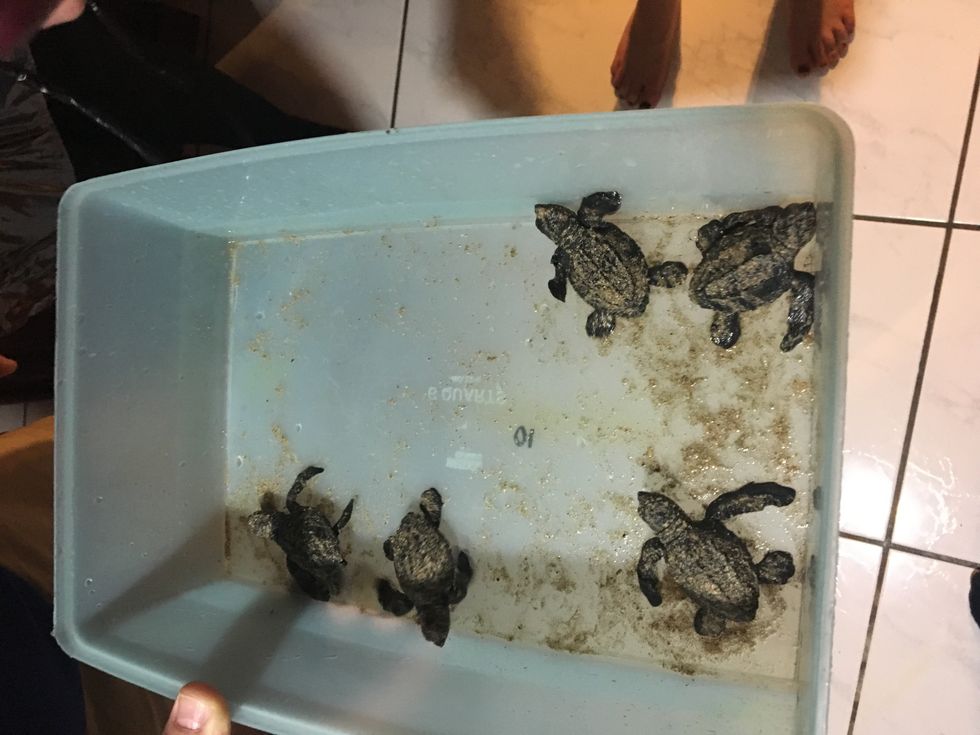
That night, in spite of the sheer exhaustion we all suffered from, we trekked out to the beach. Our bags arrived later than we did, so I was stuck traversing the beach in clunky hiking boots (to the dismay of my ankles). The stars were brighter than I had ever seen, and a cool breeze left us all at a comfortable temperature. My team leader, Jose, a local, was friendly and happy to teach us about the area. For hours, we walked miles up and down the beaches, nothing of note having happened.
We were walking along, talking and laughing under the skies of Playa Ventanas when suddenly Jose shushed us. He pointed excitedly at what looked like tire tracks. I followed the line of the tracks up until I laid my eyes on a massive creature—a leatherback sea turtle.
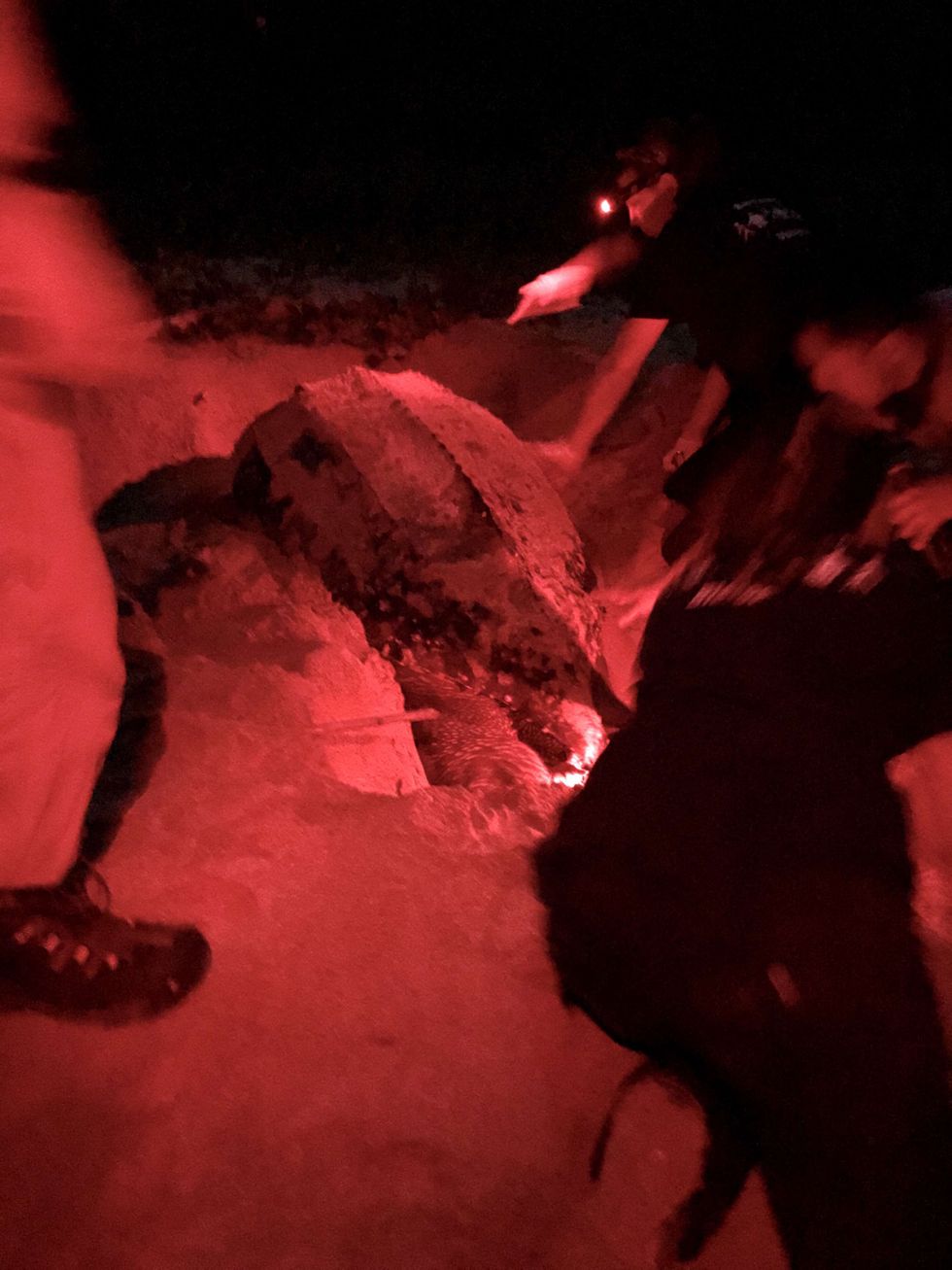
Suddenly, we were all set into motion. We recorded specifics, such as time and location. These were pretty hands off. However, when a sea turtle is found about to nest, close-up and personal measurements are needed. Jose tasked me with counting the eggs. To do this, I laid down on the sand at the back of the turtle, holding one flipper back, and placed a thermometer prior to the laying of the eggs. As the egg laying began, I had to get pretty close into the nest to count every egg that was laid. After what seemed like forever, the turtle stopped laying eggs, and I was able to get up from the ground. I was covered in sand and cloacal fluid, but I was exhilarated.
Afterward, physical measurements were taken, as well as observation of any markings of scars and whether or not it had been tagged. I was awestruck by the sheer mass of this creature. Though I had cared about ocean conservation before, getting to see this majestic animal right before my eyes gave me a brand new perspective.
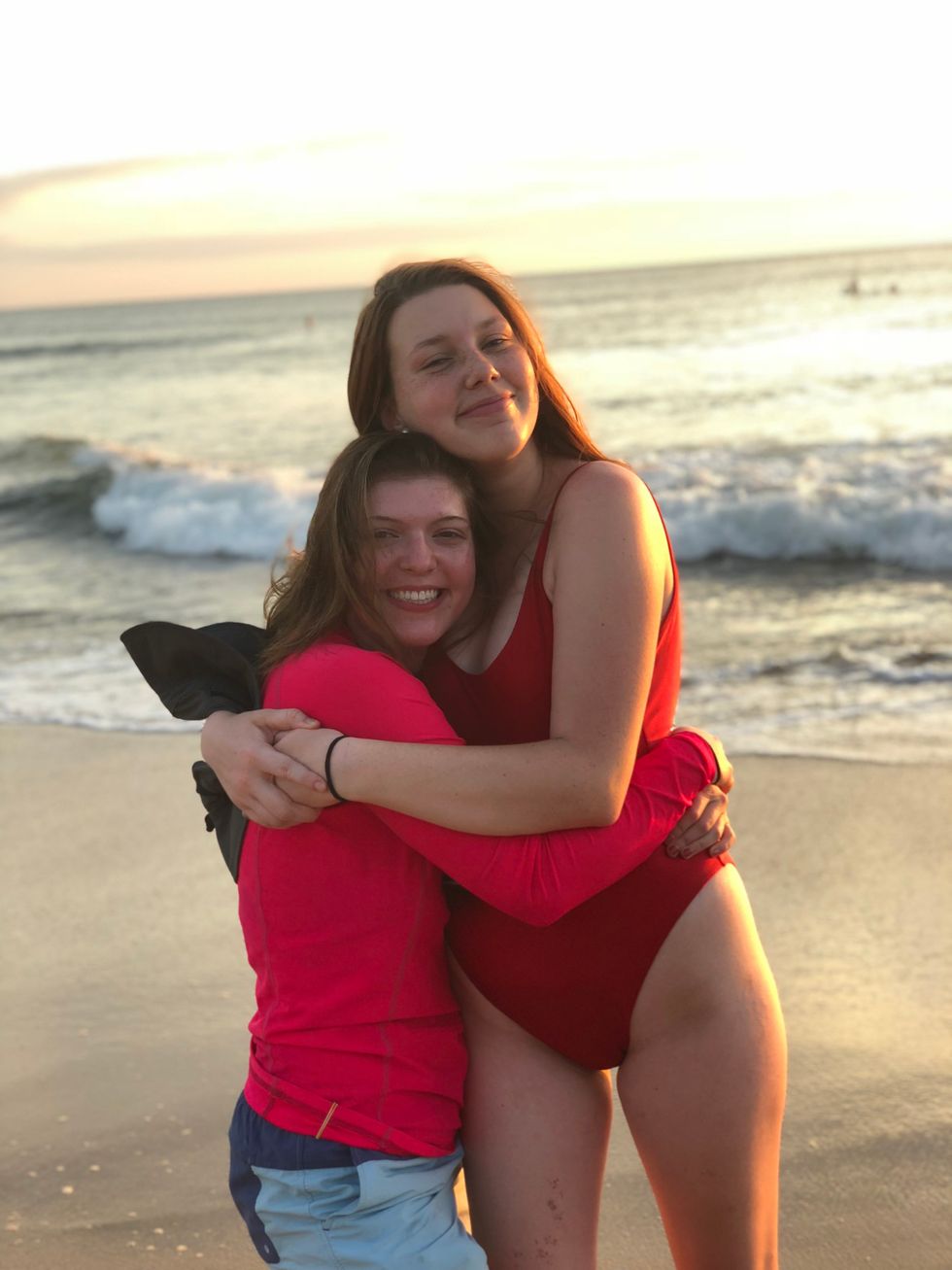
The rest of the days at Playa Grande were far less eventful and more laidback. My friends and I got to fully take in the beauty of Playa Grande and Playa Ventanas, as well as explore the local community a bit.
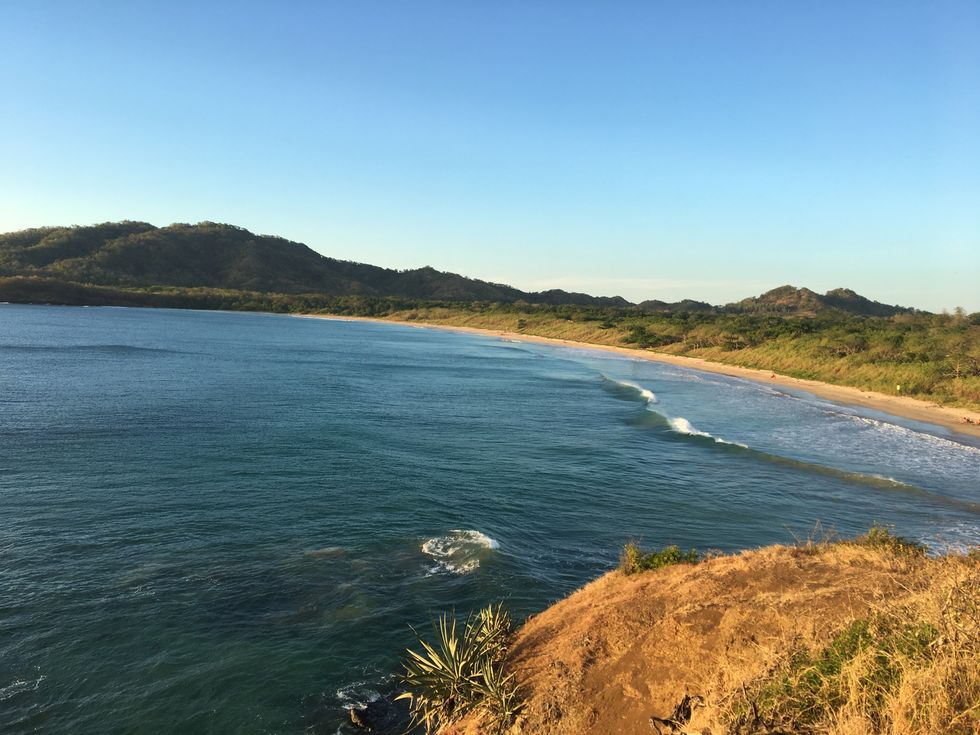
My experience in Playa Grande was a magical start to a trip of a lifetime.


